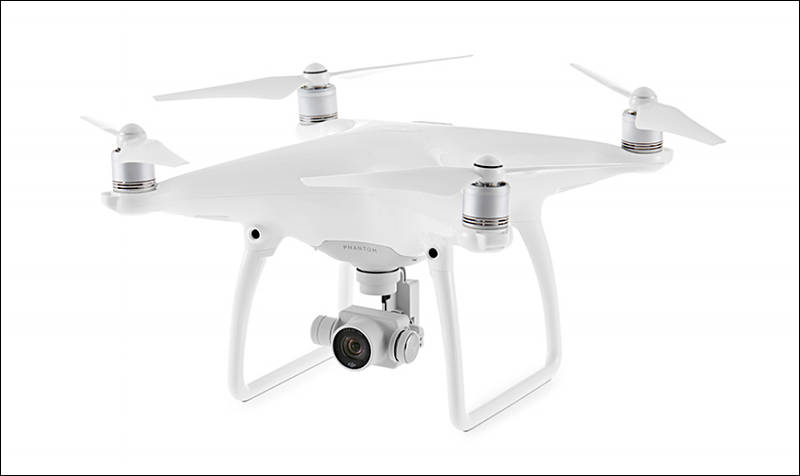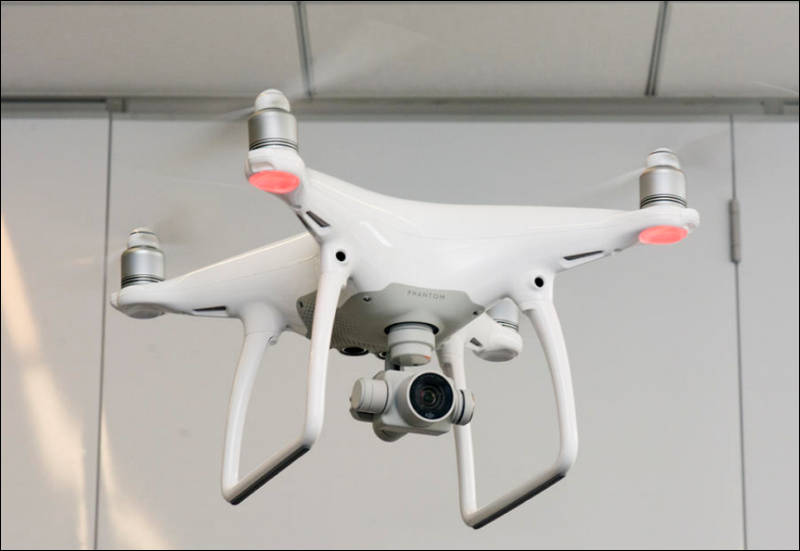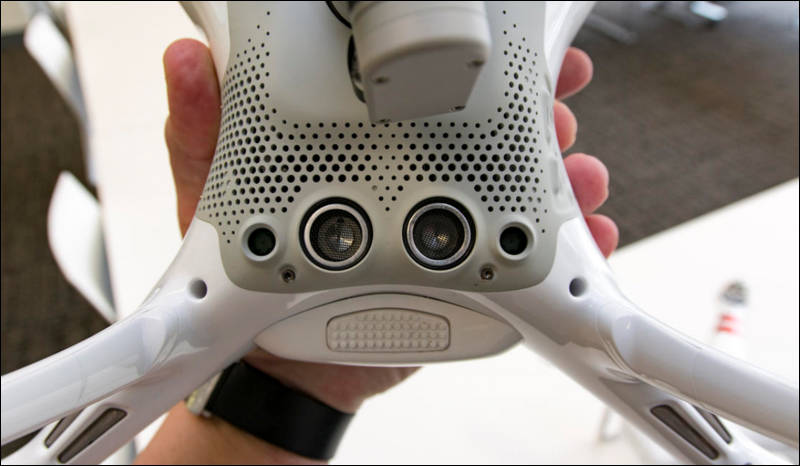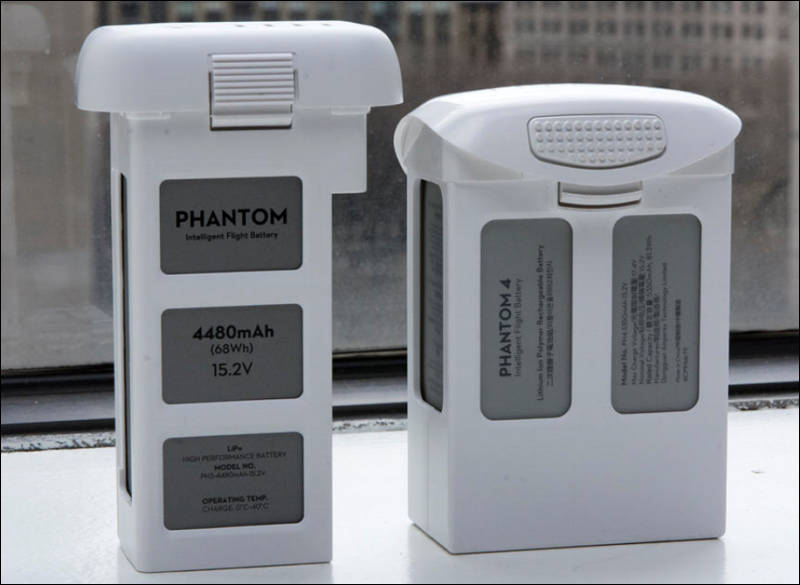
It allows to keep PV going, with more focus towards AI, but keeping be one of the few truly independent places.
-
Specs
- 4K usual (like OSMO) camera, 1080p120
- 4 additional cameras
- Ultrasonic height metering
- Focus on additional sensors to avoid bumping into things
- $1,399 price
Info and order at http://store.dji.com/product/phantom-4


 img191.jpg800 x 476 - 24K
img191.jpg800 x 476 - 24K -
Awesome. We're about to buy another drone but this will be worth waiting for.
-



More sensors and new battery.

 img187.jpg800 x 551 - 34K
img187.jpg800 x 551 - 34K
 img185.jpg800 x 466 - 48K
img185.jpg800 x 466 - 48K
 img186.jpg800 x 585 - 45K
img186.jpg800 x 585 - 45K -
Camera still sucks. It is the same cam, so it produces the same ugly footage full of block artefacts, aliasing and moiré. I love my phantom, but i am desperately waiting for a small drone with a better cam.
-
I think that they aim for mass market.
More easy control, more future proof.
All this avoidance systems can fail one time leaving someone who do not expect this to be badly hurt.
-
PR
DJI, the world’s leading maker of unmanned aerial vehicles, on Tuesday launched the Phantom 4, the first consumer quadcopter camera (or “drone”) to use highly advanced computer vision and sensing technology to make professional aerial imaging easier for everyone.
The Phantom 4 expands on previous generations of DJI’s iconic Phantom line by adding new on-board intelligence that make piloting and shooting great shots simple through features like its Obstacle Sensing System, ActiveTrack and TapFly functionality.
“With the Phantom 4, we are entering an era where even beginners can fly with confidence,” said DJI CEO Frank Wang. “People have dreamed about one day having a drone collaborate creatively with them. That day has arrived.”
The Phantom 4’s Obstacle Sensing System features two forward-facing optical sensors that scan for obstacles and automatically direct the aircraft around the impediment when possible, reducing risk of collision, while ensuring flight direction remains constant. If the system determines the craft cannot go around the obstacle, it will slow to a stop and hover until the user redirects it. Obstacle avoidance also engages if the user triggers the drone’s “Return to Home” function to reduce the risk of collision when automatically flying back to its take off point.
With ActiveTrack, the Phantom 4 breaks new ground, allowing users running the DJI Go app on iOS and Android devices to follow and keep the camera centered on the subject as it moves simply by tapping the subject on their smartphone or tablet. Perfectly-framed shots of moving joggers or cyclists, for example, simply require activating the ActiveTrack mode in the app.
The Phantom 4 understands three-dimensional images and uses machine learning to keep the object in the shot, even when the subject changes its shape or turns while moving. Users have full control over camera movement while in ActiveTrack mode – and can even move the camera around the object while it is in motion as the Phantom 4 keeps the subject framed in the center of the shot autonomously. A “pause” button on the Phantom 4’s remote controller allows the user to halt an autonomous flight at any time, leaving the drone to hover.
By using the TapFly function in the DJI Go app, users can double-tap a destination for their Phantom 4 on the screen, and the Phantom 4 calculates an optimal flight route to reach the destination, while avoiding any obstructions in its path. Tap another spot and the Phantom 4 will smoothly transition towards that destination making even the beginner pilot look like a seasoned professional.
The Phantom 4’s camera, still the world’s best aerial-optimized 4K imaging device, has undergone an upgrade that includes improved optics for better corner sharpness and reduced chromatic aberration. The Phantom 4 also has DJI’s signature Lightbridge video transmission system onboard, allowing users to see what their camera sees in HD and in real-time on their smart devices at a distance up to five kilometers (3.1 miles).
The Phantom 4’s form factor, still the classic quadcopter style pioneered by DJI, has been redesigned and redefined to emphasize elegance and smoother, more-aerodynamic lines. Its frame incorporates a lightweight composite core to provide enhanced stability and more-agile flight. The core now features a redesigned gimbal that provides more stability and vibration dampening, and has been repositioned for a better center of gravity and to reduce the risk of propellers getting in the shot.
Refinements to motor efficiency, power management and a new intelligent battery have extended the Phantom 4’s flight time to 28 minutes, which means more time in the air to capture professional photos and video.
DJI crafted the Phantom 4 with reliability in mind, including redundant inertial measurement units (IMUs) and dual compasses onboard. It uses new push-and-lock propellers that are faster to install and more secure in flight.
In addition to intelligence and ease-of-use, the Phantom 4 is built for fun. Its new “Sport Mode” for advanced flyers gives a taste of what drone racing feels like. In “Sport Mode,” the Phantom 4 can fly 20 meters per second (45 miles per hour) and ascends and descends more rapidly than in other modes. The craft’s acceleration and top speed in “Sport Mode” also mean it can reach locations for shots faster and capture shots you couldn’t get before.
“Though the Phantom 4 is easy to use, let’s not forget it is a high-performance aircraft powered by unparalleled DJI technology,” said Senior Product Manager Paul Pan.
The Phantom 4’s U.S. retail price is $1,399.
Pre-orders for the Phantom 4 will start March 1 and customers will begin receiving their units on March 15. The Phantom 4 will also be available in-store at DJI's flagship stores and Apple stores around the world starting March 15. Phantom 4 pre-orders from DJI’s other sales partners will commence on March 23, with availability from April 1.
-
@utezet I agree totally. Some nice features added which will eventually become standard on future models but still not a compelling upgrade overall. The price would have to drop to $1000 for me to even consider it. On the other hand, I would gladly pay $1700 for a 20Mp 1" sensor version. They're either missing a big chunk of the upgrade market or they're only a few months away from launching another model.
-
Is there camera currently available in that price range with those specs? That upgrade you're referring to is coming (sort of). It's called the Inspire Pro X5R. The upgrade price will be $6k. A serious chunk of change for no redundancy and proprietary everything.
-
Can be good first drone for beginners like me.
-
Specs aren't that relevant. it could be a 1080 30p 12 mp cam, if it only delivered footage without these ugly artefacts. P3 flys like a dream, the bird and its gimbal are absolutley perfect, lightbridge is just breathtaking technology and the footage......ruins it all! Let's hope they increased the data rate and perhaps the cam has a better processor, so it can do a full sensor readout. The sensor may be good enough, but the processing of the P3 makes it looking just horrible. I watched every video that i could get and i always see moire. In germany it is widley used on television, often in the news and i always recognice it as p3 footage. Somone may say the cam has its own character, but i think it's ugly. Let's pray they took a better processor for the p4. if there is much less moire and less blocky surfaces a may buy one.
-
@filthy I disagree. The Inspire doesn't travel well, it has very short flight times and it costs far too much even with the standard X5 camera. A 1" sensor would be the perfect compromise because it can be flown on a Phantom with probably no more than a 2 minute drop in flight time. That would keep flight times in the 25 minute range (still 10 minutes better than Inspire) and keep the bird under the proposed 4.4lb micro UAS weight limit for less red tape when flying commercially (eventually). The convenience of being able to carry-on to an airline is also a huge benefit.
@utezet I agree with regard to the image processor, it sucks compared to GoPro's implementation. But there's also noise, which is a huge issue on the 1/2.3" sensor used by DJI, ISO 200 is just barely acceptable for stills and I wouldn't even go there for video when shooting log. A 1" BSI sensor with proper processing could run reliably up to 1600 ISO, so that's the real upgrade path I'm hoping for at this point... like you said - with better image processing.
-
The Inspire is a bit too bulky for my taste as well (for what it currently offers). If I'm going to fly something that size, then I'll just just my 850 and 1000m octos that carry GH4, A7S, FS700, etc. Having something that packs down to Phantom size is a nice benefit. But I'm still curious if you know of an existing cam that has the specs you're looking for in a small enough body and at that price point? Seems unrealistic. But I'm always interested to learn of other options. But speculating on flight times based on sensor size alone? Odd. The BMMCC is probably my next aerial camera. Just waiting to see more footage from it or hopefully fly one myself soon.
-
the yuneec h920 with is gh4 cg04 camera is the only ready to fly out the box thing i would buy, with 6 motors being a hexa you still have a chance of saving the bird if one motor or esc go's bye bye no smart lipo's ect....also the inspire is limited to the camera it can carry and lenses ect..
-
@filthy Think Sony RX100 IV performance with a fixed wide angle lens rather than a zoom. All of the image processing resides inside the phantom shell and the lens/sensor/gimbal only require a small increase in size & weight over the current module. The new Ambarella H2 SoCs are 14nm and only draw 2 watts, support 10 bit HDR video and image scaling on sensors up to 64 Mp. http://www.ambarella.com/news/91/74/Ambarella-Introduces-Low-Power-4K-Ultra-HD-SoCs-for-Sports-and-Flying-Cameras
-
@chef That's really impressive considering the amount of distance logged and the nearly identical looking vehicle thrown in the mix. I was against upgrading to the P4 because of the marginal image quality boost but this tracking feature together with seeing collision avoidance in action during RTH maneuvers (see below), now has me reconsidering -
-
Quite positive feedback for now. Seems like good buy for beginner.
-
@tron p3-p4 differences.... I have been waiting for over 10 years I think im sold now...
-
Review
Howdy, Stranger!
It looks like you're new here. If you want to get involved, click one of these buttons!
Categories
- Topics List23,992
- Blog5,725
- General and News1,354
- Hacks and Patches1,153
- ↳ Top Settings33
- ↳ Beginners256
- ↳ Archives402
- ↳ Hacks News and Development56
- Cameras2,367
- ↳ Panasonic995
- ↳ Canon118
- ↳ Sony156
- ↳ Nikon96
- ↳ Pentax and Samsung70
- ↳ Olympus and Fujifilm101
- ↳ Compacts and Camcorders300
- ↳ Smartphones for video97
- ↳ Pro Video Cameras191
- ↳ BlackMagic and other raw cameras116
- Skill1,960
- ↳ Business and distribution66
- ↳ Preparation, scripts and legal38
- ↳ Art149
- ↳ Import, Convert, Exporting291
- ↳ Editors191
- ↳ Effects and stunts115
- ↳ Color grading197
- ↳ Sound and Music280
- ↳ Lighting96
- ↳ Software and storage tips266
- Gear5,420
- ↳ Filters, Adapters, Matte boxes344
- ↳ Lenses1,582
- ↳ Follow focus and gears93
- ↳ Sound499
- ↳ Lighting gear314
- ↳ Camera movement230
- ↳ Gimbals and copters302
- ↳ Rigs and related stuff273
- ↳ Power solutions83
- ↳ Monitors and viewfinders340
- ↳ Tripods and fluid heads139
- ↳ Storage286
- ↳ Computers and studio gear560
- ↳ VR and 3D248
- Showcase1,859
- Marketplace2,834
- Offtopic1,320






